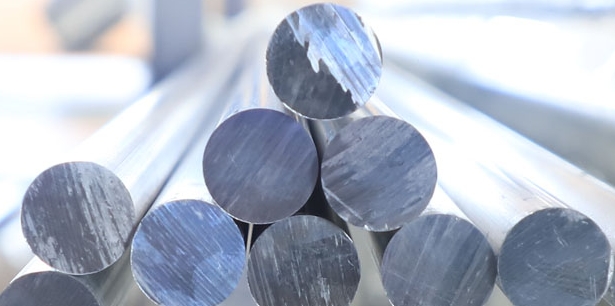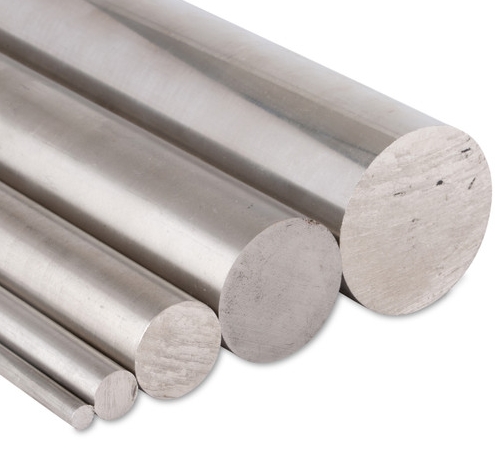Is Stainless Steel Magnetic? A Comprehensive Guide
Have you ever wondered, “Is stainless steel magnetic?” Many people are surprised to learn that stainless steel doesn’t always exhibit magnetic properties. Whether you’re working with CNC machining or designing a high-precision part, understanding the magnetic nature of stainless steel is crucial. This guide will explain everything you need to know about the magnetic properties of stainless steel, from its composition to how it behaves in different environments.
Not all stainless steel is magnetic, and its magnetic properties depend on the alloy composition and crystal structure of the material. Grades like 304 stainless steel are non-magnetic, while others, such as 430 stainless steel or 410 stainless steel, are magnetic. For engineers and CNC machining professionals, understanding whether a particular grade of stainless steel is magnetic is crucial when selecting the material for projects where magnetism plays a role.
Now that we know that stainless steel can either be magnetic or non-magnetic, let’s dive deeper into understanding why this happens and which types of stainless steel are magnetic.
What Is Stainless Steel?
Stainless steel is a group of corrosion-resistant steel alloys that contain a minimum of 10.5% chromium. The chromium content gives stainless steel its characteristic resistance to rust and staining. However, it is the alloy composition and crystal structure that can determine its magnetic properties. Generally, stainless steel is divided into several families: austenitic, ferritic, martensitic, and duplex stainless steel.

How Does Steel Become Classified as Stainless?
Steel is classified as stainless steel when it contains at least 10.5% chromium, which reacts with oxygen in the air to form a stable, protective oxide layer. This layer shields the steel from rust and corrosion, making it well-suited for use in demanding environments. In addition to chromium, elements like nickel and molybdenum further enhance the corrosion resistance of stainless steel.
In the process of manufacturing CNC machined parts, understanding the alloy composition is crucial for selecting the right type of stainless steel. For instance, 304 stainless steel is highly resistant to corrosion, but it is not magnetic. In contrast, 410 stainless steel is magnetic and is preferred for applications that require high strength and durability.
Common Types of Stainless Steels
Several types of stainless steel are commonly used across various industries, including CNC machining, each with unique properties suited for specific applications:
Austenitic Stainless Steel: These are the most widely used grades of stainless steel due to their exceptional resistance to corrosion, good formability, and generally non-magnetic nature. This type of steel is often chosen for applications in medical devices, food processing, and electronics. Austenitic stainless steels are usually non-magnetic or only weakly magnetic under certain conditions.
Ferritic Stainless Steel: This type of stainless steel is magnetic and offers lower corrosion resistance compared to austenitic steels. However, it is more affordable and still provides excellent strength, making it ideal for applications such as exhaust systems, automotive parts, and certain industrial components. Ferritic stainless steels are commonly used in situations where magnetic properties are required.
Martensitic Stainless Steel: Known for its magnetic properties and ability to be hardened through heat treatment, martensitic stainless steels offer excellent wear resistance and strength. These steels are often used in the production of tools, CNC machined parts, knives, and industrial machinery that require durability and toughness.
Duplex Stainless Steel: Combining both austenitic and ferritic properties, duplex stainless steels provide superior strength compared to austenitic steels and better corrosion resistance than ferritic types. Some grades of duplex stainless steel are magnetic and are frequently used in demanding environments such as chemical processing, marine applications, and offshore oil rigs.
Each type of stainless steel brings a unique combination of magnetic properties, strength, and resistance to corrosion, making it essential to select the appropriate grade based on the specific demands of the project, especially when working with CNC machining and precision manufacturing.
What Makes Something Magnetic?
Magnetism in materials is determined by their atomic structure and how the electrons within the atoms are arranged. In general, materials that are magnetic contain unpaired electrons, which align in the same direction to create a magnetic field. Ferromagnetic materials, such as iron and certain types of stainless steel, have a crystal structure that enables their atoms to align, which makes them highly magnetic.
The magnetic properties of stainless steel are largely influenced by its crystal structure. Austenitic stainless steel, for example, has a crystal arrangement that does not support magnetic properties, making it generally non-magnetic. On the other hand, ferritic and martensitic stainless steel possess a different crystal structure that allows the atoms to align in a way that makes these materials magnetic.
Is Stainless Steel Magnetic?
The answer to whether stainless steel is magnetic depends on the specific grade being used. In general, austenitic stainless steel, such as 304 stainless steel and 316 stainless steel, is either non-magnetic or weakly magnetic. Ferritic stainless steel, like 430 stainless steel, is magnetic, while martensitic stainless steel, such as 410 stainless steel, is also magnetic.
304 stainless steel, a popular choice for CNC machining, is typically non-magnetic, though it can become weakly magnetic under certain conditions like cold working or deformation. 316 stainless steel, often used in harsh environments such as marine applications, is similarly non-magnetic.

On the other hand, 430 stainless steel and 410 stainless steel, which are frequently used in automotive and industrial settings, are magnetic and offer excellent strength and wear resistance.
Many people are uncertain about whether stainless steel is magnetic or not. While stainless steel contains iron, which is magnetic, not all varieties exhibit magnetic properties. Some stainless steel types are magnetic, while others are not, making the answer more nuanced than a simple “yes” or “no.”
Why Does Magnetism in Stainless Steels Matter?
The magnetic properties of stainless steel can have significant implications for various industrial applications. For example:
CNC Machining: Magnetic stainless steel grades are useful in CNC machining because they can be easily held in place using magnetic fixtures, simplifying the machining process.

Applications: In applications where the material needs to interact with magnetic fields (such as electromagnetic components), choosing the right magnetic stainless steel is essential.
Corrosion Resistance: Magnetic stainless steel may not offer the same level of corrosion resistance as non-magnetic stainless steel grades, making it important to consider this factor when designing parts for use in corrosive environments.
Which Types of Stainless Steel are Magnetic?
Several grades of stainless steel are magnetic, each offering unique properties for different applications:
Ferritic Stainless Steel: This type of stainless steel is magnetic and is commonly used in CNC machining for applications such as automotive parts, exhaust systems, and other industrial components. Ferritic steels offer good strength and moderate corrosion resistance.
Martensitic Stainless Steel: Known for its magnetic properties, martensitic stainless steel is commonly used in the manufacturing of tools, CNC machined parts, and industrial machinery. It can be heat-treated to achieve high strength and wear resistance, making it ideal for applications that require durability.
Duplex Stainless Steel: Some grades of duplex stainless steel are magnetic. These steels combine both austenitic and ferritic properties, providing a good balance between corrosion resistance and strength. Duplex steels are often used in harsh environments, including chemical processing and marine applications, where both strength and resistance to corrosion are crucial.
These magnetic types of stainless steel are essential in various industries, offering versatility and reliability in demanding applications.
Start Your Stainless Steel CNC Machining Project
When starting your CNC machining project, selecting the right type of stainless steel is essential to ensure optimal performance. If your project requires magnetic properties, consider using 410 stainless steel, 430 stainless steel, or 440 stainless steel. On the other hand, if non-magnetic properties are more suitable, opt for 304 stainless steel, 316 stainless steel, or other austenitic stainless steels. Always make sure that your material choice aligns with your project’s specific requirements, whether those include magnetism, corrosion resistance, strength, or wear resistance.
At VMT, we specialize in providing customized CNC machined parts that meet the highest standards for precision, appearance, and functionality. Our team of engineers with over 20 years of experience can help guide you through selecting the right material, ensuring your project specifications are met. With our expertise and advanced machining capabilities, including 4-axis and 5-axis CNC centers, we deliver parts within 3 days to support fast-paced production schedules.
In Conclusion
Whether stainless steel is magnetic or not depends on its grade and crystal structure. Understanding these properties is essential for choosing the right material in CNC machining projects, ensuring optimal performance and durability.
Blog About the Magnetic
Frequently Asked Questions
Is Stainless Steel Rust Proof?
Stainless steel is corrosion-resistant but not entirely rust-proof. It is highly resistant to rust due to the presence of chromium, which forms a protective oxide layer on its surface. However, under certain conditions, it can still rust. Exposure to harsh chemicals, saltwater, high humidity, or damage to the protective layer can lead to rusting. Grades of stainless steel with lower corrosion resistance, like 304, are more susceptible, while higher-grade stainless steels, such as 316, offer better protection in more aggressive environments.
What is 100% Stainless Steel?
“100% stainless steel” refers to a form of stainless steel composed entirely of iron, chromium, and other alloying elements such as nickel, molybdenum, and manganese, without any additional metals or impurities. In practice, however, most stainless steels are alloys, and it is rare to find a completely pure form of stainless steel. Common grades, like 304 or 316, are made of specific combinations of elements to enhance properties such as corrosion resistance, strength, and durability.
Will a Magnet Stick to Stainless Steel?
A magnet will stick to some types of stainless steel but not all. It will attract ferritic stainless steel, which has a high iron content and is magnetic. On the other hand, austenitic stainless steel, such as 304 and 316, is typically non-magnetic because it has a different crystalline structure. The magnetic properties of stainless steel depend on its composition, particularly the ratio of iron, chromium, and nickel.
Why is 304 Stainless Steel Magnetic?
304 stainless steel is generally non-magnetic due to its austenitic structure, which is formed by combining iron, chromium, and nickel. However, 304 stainless steel can exhibit magnetic properties under certain conditions, especially after cold-working processes like bending, rolling, or welding. These processes can alter the material’s crystal structure, causing some magnetic behavior. This change does not significantly affect the material’s corrosion resistance or overall performance.



